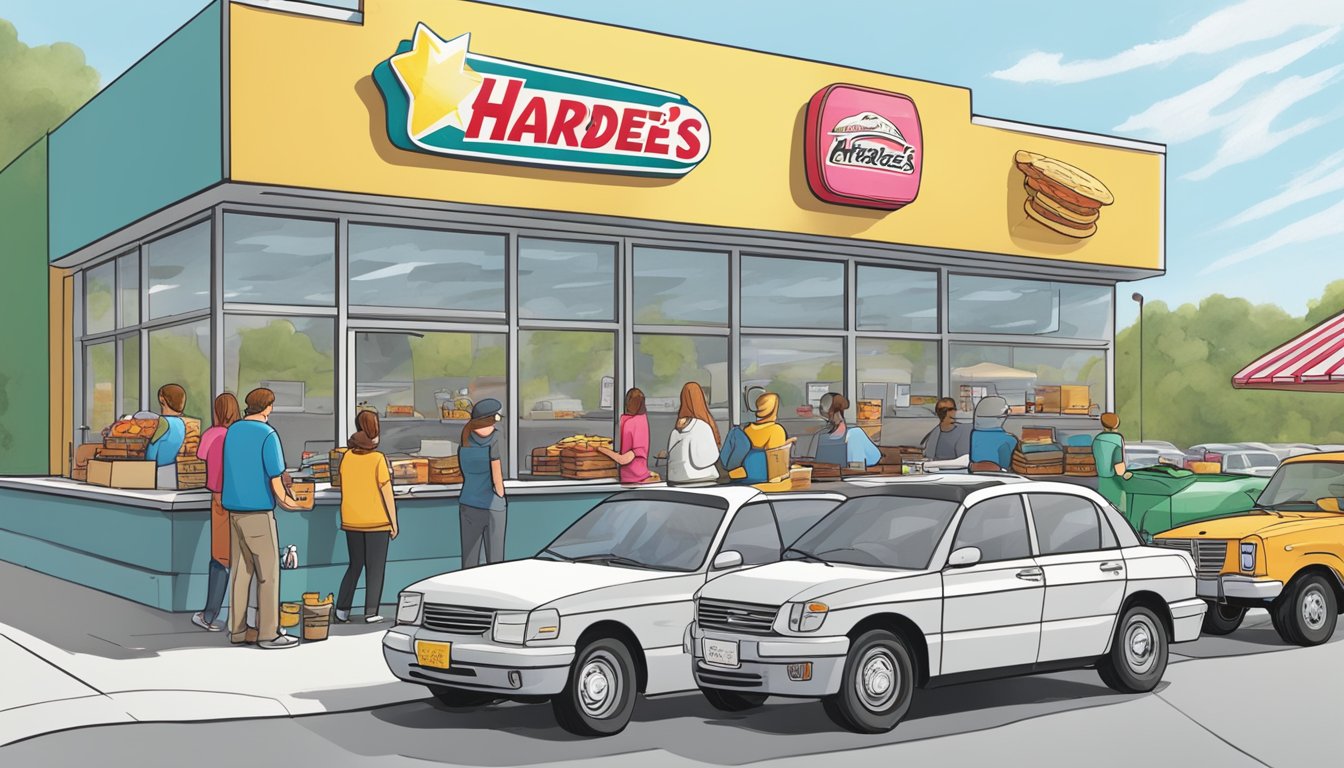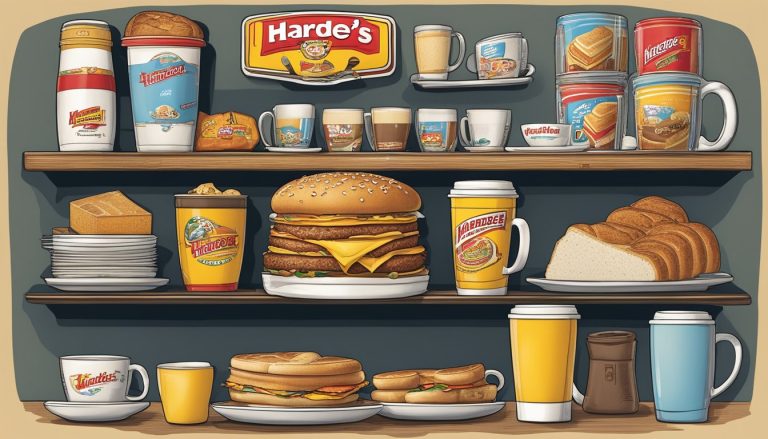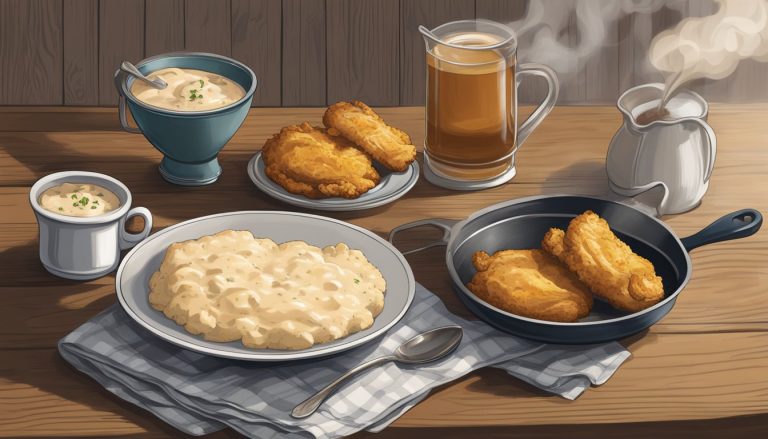Hardee’s breakfast menu has become a staple for many Americans seeking a hearty start to their day. Since its inception in 1960, Hardee’s has evolved from a simple hamburger joint to a fast-food powerhouse known for its indulgent breakfast offerings. Hardee’s breakfast hours typically run from 6:00 AM to 10:30 AM, providing ample time for early risers and late starters alike to enjoy their morning meals.
The rise of drive-thru culture has played a significant role in Hardee’s success. Most Hardee’s locations now feature drive-thru windows, catering to the growing demand for quick, convenient meals on the go. This shift reflects broader changes in American dining habits, where speed and accessibility have become paramount.
Hardee’s breakfast menu boasts a variety of options, from biscuit sandwiches to breakfast platters. While some health-conscious consumers may find the menu lacking in lighter fare, Hardee’s continues to attract customers with its generous portions and satisfying flavors. The chain’s ability to adapt to changing consumer preferences while maintaining its core identity has contributed to its enduring presence in the fast-food landscape.
The Beginning of Hardee’s: Origins and Founding
Hardee’s journey began in 1960 when Wilber Hardee opened the first restaurant in Greenville, North Carolina. The concept quickly gained traction, setting the stage for rapid expansion and innovation in fast food service.
From Humble Beginnings to Drive-Thru Pioneer
Wilber Hardee launched Hardee’s Hamburgers with a simple menu focused on quality burgers at affordable prices. The first location in Greenville proved an instant success, generating over $9,500 in profit within its initial four months.
This early triumph inspired Hardee to envision a larger chain. He partnered with Leonard Rawls and Jim Gardner to expand through franchising. The trio believed Hardee’s had the potential to become a major player in the fast food industry.
By 1963, Hardee’s had gone public, fueling further growth. The chain’s expansion soon reached beyond U.S. borders, marking the beginning of its international presence.
Hardee’s commitment to innovation led to the introduction of drive-thru service, a move that would significantly impact fast food culture. This pioneering step helped cement Hardee’s position as a key player in the evolving quick-service restaurant landscape.
Evolution of Breakfast at Hardee’s

Hardee’s breakfast offerings have transformed significantly over the years, adapting to changing consumer tastes and preferences. The chain has consistently introduced innovative menu items while maintaining its classic favorites.
Hardee’s Breakfast Menu Over the Years
Hardee’s breakfast menu began with simple offerings like biscuits and gravy. In the 1970s, they introduced the Made from Scratch Biscuits, which became a staple. The 1980s saw the addition of breakfast platters, featuring eggs, hash rounds, and meat options.
In the 1990s, Hardee’s expanded its menu to include healthier choices. They introduced lighter options like yogurt parfaits and fruit cups. The 2000s brought more variety with the Monster Biscuit and breakfast burritos.
Recently, Hardee’s has embraced plant-based options. In 2020, they launched Beyond Meat breakfast items nationwide, catering to vegetarian customers.
Signature Breakfast Items
Hardee’s is known for its hearty breakfast offerings. The Sausage Biscuit remains a fan favorite, featuring a savory sausage patty on a freshly baked biscuit. The Country Ham Biscuit is another classic, showcasing thinly sliced ham.
For those with bigger appetites, the Breakfast Platter offers a complete meal. It typically includes eggs, hash rounds, and a choice of meat. The Chicken Biscuit Combo pairs a crispy chicken fillet with a biscuit and side.
Hardee’s Super Sausage Biscuit takes indulgence to the next level. It features two sausage patties and egg on a biscuit, satisfying even the heartiest appetites.
Drive-Thru Culture and Fast-Food Innovation
Drive-thru service has revolutionized the fast-food industry, offering customers quick meals without leaving their vehicles. This innovation has shaped consumer expectations and restaurant operations in significant ways.
Rising Popularity of Drive-Through Convenience
Drive-through windows emerged in the 1930s but gained widespread adoption in the 1970s. Fast-food chains embraced this model to serve customers faster and increase sales volume. Today, drive-thrus account for 60-70% of sales at many quick-service restaurants.
The appeal lies in speed and ease. Customers can order, pay, and receive food without parking or entering the restaurant. This convenience is particularly valued by commuters, families with young children, and those with mobility issues.
Drive-thrus have evolved with technology. Many now feature digital menu boards, multiple ordering lanes, and mobile app integration for smoother transactions.
Impact on Consumer Behavior
Drive-thrus have significantly influenced how people eat and interact with restaurants. The ability to grab food quickly has made fast-food more accessible for busy lifestyles.
This convenience has led to increased frequency of fast-food consumption. Many consumers now view drive-thrus as a regular meal option rather than an occasional treat.
The trend has also shaped expectations for speed in other industries. Customers now look for quick, efficient service across various sectors.
Drive-thrus have faced criticism for promoting sedentary behavior and unhealthy eating habits. In response, some chains have introduced healthier menu options and improved nutritional transparency.
Commitment to Quality: Ingredients and Food Preparation

Hardee’s prioritizes high-quality ingredients and meticulous food preparation to deliver delicious burgers and crispy chicken. This commitment shines through in their sourcing practices and menu offerings.
Sourcing High-Quality Ingredients
Hardee’s partners with trusted suppliers to source premium ingredients. Their beef comes from grass-fed cattle raised without antibiotics or added hormones. Fresh produce is delivered daily to ensure optimal flavor and nutrition. Buns are baked fresh in-store throughout the day.
Chicken is sourced from farms that follow strict animal welfare guidelines. All poultry is raised cage-free without antibiotics. Hardee’s uses 100% real cheese made from milk free of artificial growth hormones.
Menu Items and Preparation
Hardee’s prides itself on made-from-scratch menu items. Biscuits are prepared fresh every 15 minutes starting at 4 AM. Burgers are made with 100% Angus beef, hand-formed and char-grilled to order. Each patty is seasoned with a proprietary spice blend.
Chicken is hand-breaded in small batches throughout the day. The crispy coating uses a secret recipe of herbs and spices. Salads are assembled to order using freshly chopped vegetables.
Hardee’s employs strict food safety protocols. Ingredients are stored at proper temperatures and rotated regularly. Cooking surfaces and utensils are sanitized frequently to prevent cross-contamination.
Menu Diversification and Pricing Strategy

Hardee’s has expanded its breakfast offerings while maintaining competitive pricing. The chain focuses on providing value through varied menu options and affordable meal combinations.
Adapting to Customer Preferences
Hardee’s regularly updates its breakfast menu to meet changing tastes. The chain introduced healthier options like fruit cups and yogurt parfaits alongside traditional favorites. Breakfast sandwiches now come in various sizes and styles, from classic biscuits to wraps.
Vegetarian choices have also expanded, with meat-free alternatives for popular items. Seasonal specials keep the menu fresh and encourage repeat visits.
Affordability and Meal Options
Hardee’s pricing strategy aims to balance quality and affordability. The chain offers a range of price points, from budget-friendly items under $5 to premium options.
Combo meals provide value, typically including a sandwich, hash rounds, and a drink. These bundles often represent savings compared to à la carte pricing.
The menu features tiered pricing, with small, medium, and large sizes for many items. This allows customers to choose based on appetite and budget.
Promotional deals, such as limited-time discounts on new menu items, help drive traffic and encourage sampling of different breakfast options.
The Role of Hardee’s in Modern Fast-Food Industry

Hardee’s has carved out a significant position in the fast-food landscape through strategic growth and menu innovation. The company’s focus on hearty offerings and regional expansion has shaped its identity in a competitive market.
Market Position and Competitive Edge
Hardee’s stands as a major player in the fast-food industry, particularly in Southern and Midwestern states. The chain differentiates itself with larger, more indulgent burgers and breakfast items compared to many competitors. This approach appeals to customers seeking a satisfying meal rather than just a quick bite.
Hardee’s menu innovations, like the Thickburger line, have helped maintain relevance in a crowded market. The company’s willingness to experiment with bold flavors and substantial portion sizes sets it apart from rivals like McDonald’s and Burger King.
Drive-thru service remains a crucial component of Hardee’s operations, aligning with modern consumer preferences for convenience and speed. This focus has helped Hardee’s compete effectively against other fast-food chains and even quick-service restaurants like DQ.
Expanding the Franchise Network
Hardee’s growth strategy relies heavily on franchising. The company has steadily increased its franchise locations, allowing for rapid expansion while minimizing corporate risk. This approach has enabled Hardee’s to penetrate new markets and strengthen its presence in existing ones.
Franchisees benefit from Hardee’s established brand recognition and operational support. The company provides comprehensive training and marketing assistance to ensure consistency across locations.
Hardee’s franchise model has proven resilient, adapting to changing consumer trends and economic conditions. This flexibility has allowed the chain to maintain growth even in challenging market environments.




